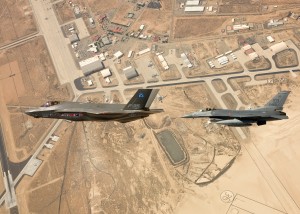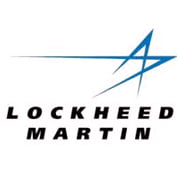The cockpit, the helmet, the fusion engine were synergistically designed with manageable workload in mind.
At the beginning of the program, 15 years ago, our design goal was “low workload.” We came to understand that low workload might not be possible during all phases of the mission. In a dense target area with modern air and surface threats low workload is not realistic.
We changed our approach and now we say “manageable single seat” workload which is a realistic objective.
The software is designed to provide situation awareness, manageable workload, and usability.
The approach is pilot friendly and designed around enhancing his or her combat effectiveness. It corrects many issues found in fourth generation airplanes that relied on simply bolting on new sensors and displays.
New hardware and better capabilities are good, but there is a point of diminished returns as we add workload and contribute to information overload.
Fifth generation hardware and software integration is done with the core purpose of freeing the pilot to become a better tactical operator and to re-shape how the aircraft can contribute to air, ground, and surface operations in a joint or coalition fleet.
It is about enabling a different concept of operations for the future.
Fourth generation aircraft have added disparate technological capabilities, which can lead to information overload.

For instance, datalinks; datalinks are great tools and nobody wants to do without it them, but if it’s not fully integrated with an advanced fusion architecture it may result in information overload for the pilot.
The needed information is there – somewhere – it’s just hard to find it, to mentally correlate it, and then to act on it.
Information overload leads to pilot task saturation and channelized attention, which has a negative impact on survival. Pilots may become preoccupied trying to interpret information when they need to be focused elsewhere.
Here’s an example to which we can all relate: Imagine your driving a car while studying the GPS or talking on the phone. Your safety is decreasing and your performance is suffering. It’s an example of misdirected focus and channelized attention.
The same holds true in the cockpit. Displays with information overload are focus magnets. It drains more and more of the pilot’s processing capacity as it takes an increasing amount of his attention to interpret data.
Consequently, safety and performance are compromised.
During those periods of channelized attention pilots become vulnerable. They may no longer be lethal. They’re certainly less survivable, and safety has been negatively impacted, even in the peacetime environment.
From the beginning of the program, we set out to design a fully integrated sensor suite coupled to an advanced fusion engine shared by other F-35s in the formation.
Next, we had to provide an easy to understand picture of battlespace in order to facilitate making tactical decisions based on that Common Operating Picture.
Instead of being buried by technological innovation, the pilot is now in a position to master it; adding technology in an integrated fashion doesn’t make the situation worse, it enhances it.
The 5th generation design approach starts at the beginning.
You’ve got to plan for:
- Internal fuel
- Internal weapons
- Agility
- Stealth
- Autonomic logistics
- Fully integrated sensor suite
- Advanced sensor fusion
- Network enabled
We’re getting more than the sum of the parts because everything is designed to be integrated in, not bolted on.
We must also design for change – primarily software change, but also tech refreshes which upgrade the internal processors. This means a block upgrade approach is part of the design process. We are getting closer to a software-defined airplane.
Managing workload and then providing tools that build and maintain situational awareness pursuant to information dominance is the goal. It’s more than just delivering a weapon system to the users. It’s a paradigm shift.
The F-35 is not just a stealthy F-16. The F-35 shifts how pilots operate by returning them to the role of tacticians in battlespace.
The focus is on multiplying performance by using the synergy available through the fusion engine, which assembles and displays the Common Operating Picture.
Rather than information overload we jump the gap to information dominance, which enhances lethality and survivability of each pilot by providing a fleet wide integrative capability.
For further discussion of the fusion engine and its impact in shaping the possibilities of a manageable workload please see
https://www.sldinfo.com/whitepapers/the-f-35-and-advanced-sensor-fusion/
And the role of the shared Common Operating Picture
https://www.sldinfo.com/whitepapers/flying-with-the-common-operational-picture-cop/
And for a look at the impact of the F-35 cockpit:


